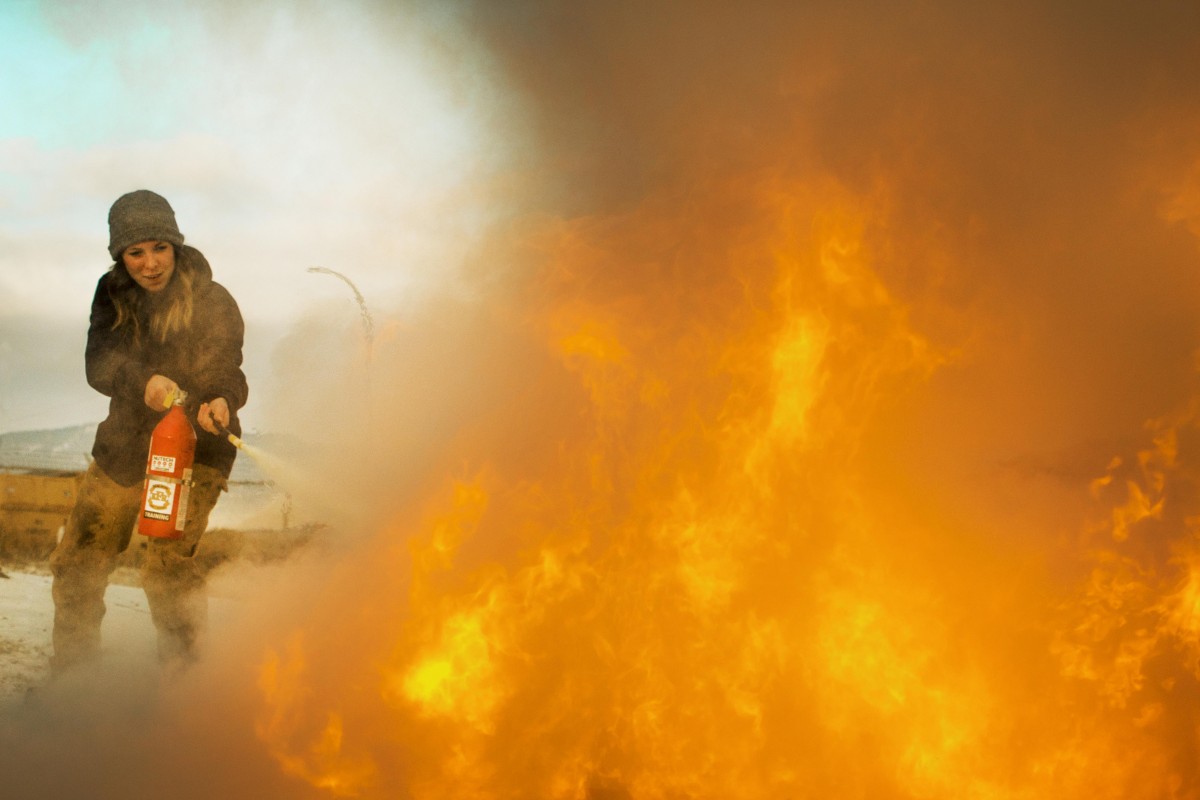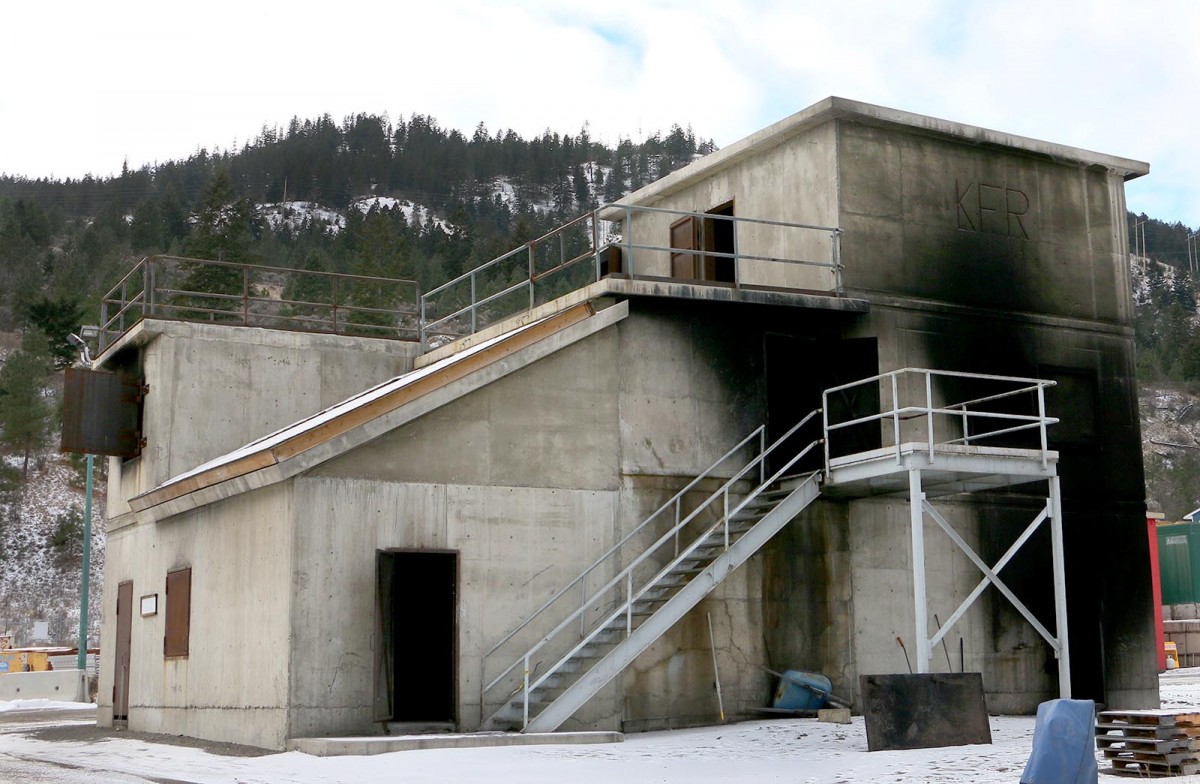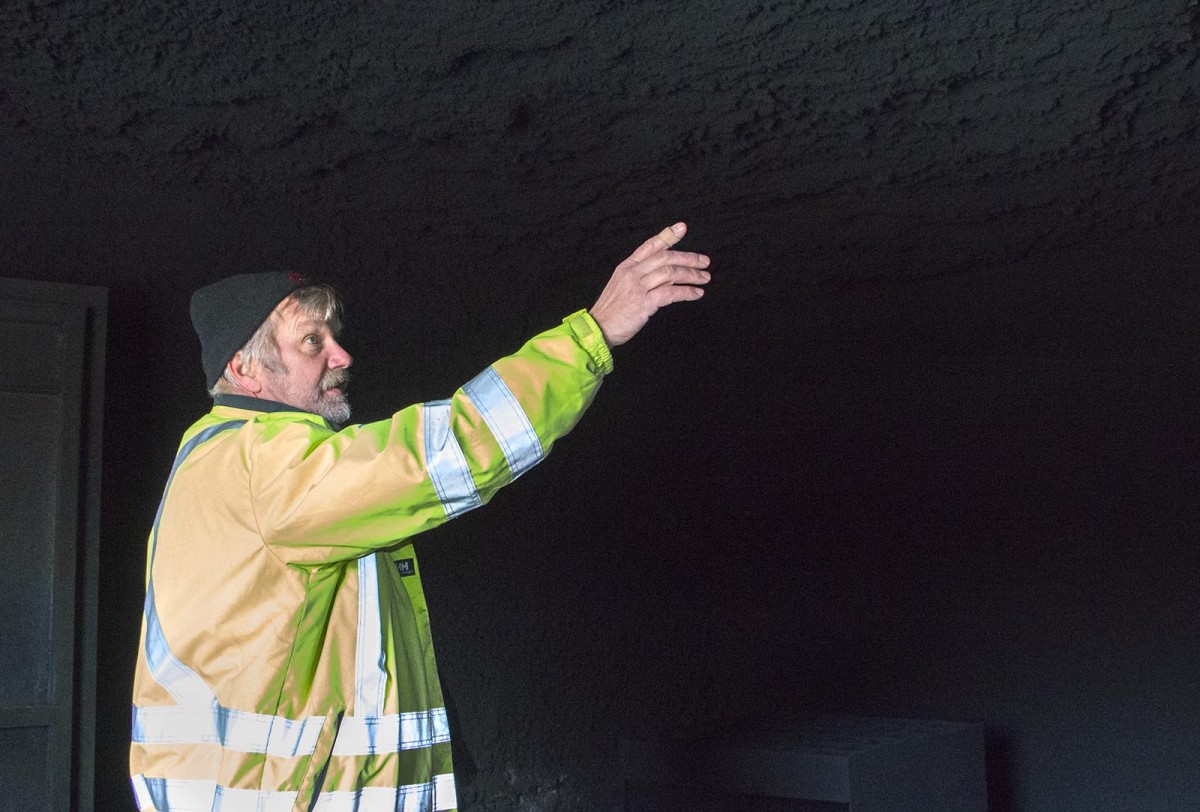
Carpentry student Taylor Brunn extinguishes a liquid propane-fuelled fire during a KFR thank you event for TRU carpentry students that also included a pizza lunch.
The friendship between the School of Trades and Technology and Kamloops Fire Rescue is one that provides students with hands-on work experience while providing KFR with some cost savings.
Construction of KFR’s new fire training centre has begun and over the next several months trades students will assist with various phases—just as they did with the original centre, which evolved over several years from a small one storey concrete structure to three stories and multiple rooms and hallways. The new centre will include a new building along with a 3,600-square-foot concrete slab where personnel can practise doing rescues from burning and non-burning vehicles.
“By having our classroom connected with different projects like the fire training hall, we are learning and they’re (KFR) benefitting from having a training facility,” said carpentry student Taylor Brunn, who along with other classmates recently to tied rebar for the vehicle rescue slab. “Everyone is benefitting by helping people out, which I think is pretty cool.”

Kamloops Fire Rescue’s training house, which will be replaced by a modern engineered-steel structure.
The new centre is located across the street from the existing location at the end of McGill Road in the city’s works yard. The main building will be a significant upgrade, including being made of engineered steel and features allowing for flames to be created using clean-burning liquid propane. In the old building, flames were created by burning wooden pallets.
Carpentry faculty member Hank Bangma said about 100 students assisted with the old building, which gave them them hands-on industrial construction experience that a classroom could never provide. Walking through the three floors, he recounted the building’s history, construction highlights like floating concrete slabs and just like any worksite, working through the unexpected challenges.
“Part of me is saddened that the building is going to be torn down because many students put a lot of work into building it and obviously were proud of their work. But the new project across the street just starts the whole process over again and that will be fun,” said Bangma, reflecting on the past before eying the future.

Carpentry faculty member Hank Bangma explains aspects of the interior of the old KFR training house, which over time has been blackened by soot. Through the years, about 100 students worked on the building.
“We can talk about an internal vibrator to consolidate concrete and I can show them how to use one, but you don’t really know what it feels like until you’re pouring the walls, pouring the footing. That experiential learning isn’t something we can do in the shop,” said Bangma.
KFR Chief Training Officer Neil Campbell said the collaboration with TRU isn’t taken lightly, saying it plays a part in the fire department’s goal of being a training centre of excellence. A recent training focussing on heavy vehicle extrication attracted seven fire departments along with RCMP, BC Ambulance, BC Ministry of Transportation and others.
“As the partnership continues to grow, we’re going to find ways for the TRU carpentry program to be involved,” said Campbell, adding, “What they do is essential to moving our training facility forward. As far as emergency services training goes, our goal is to be the jewel of the interior of BC and we couldn’t strive for that without the TRU partnership.”

